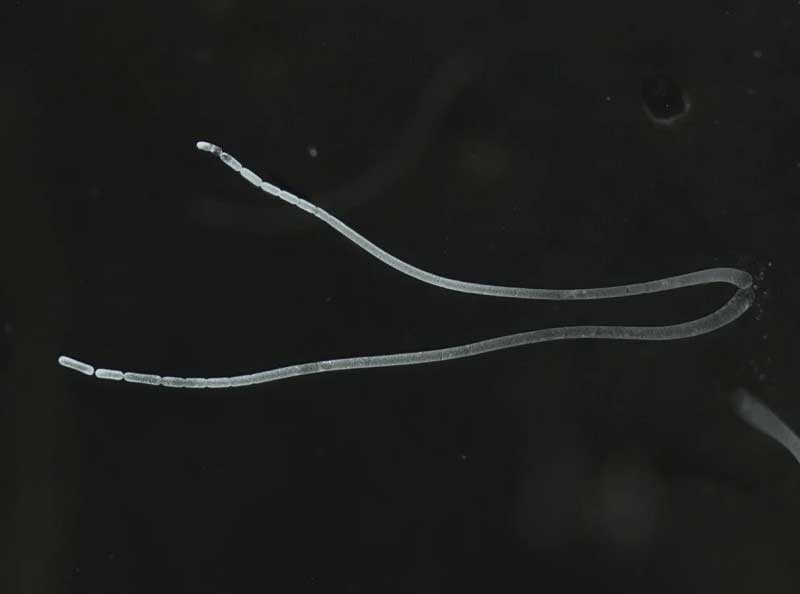June 2022
Protozoa are usually so tiny that you can only see them under a microscope. Now the bacterium "Thiomargarita magnifica", which is more than a centimeter long, has appeared - and is turning conventional wisdom completely on its head.
 Image: Jean-Marie Volland
Image: Jean-Marie Volland
On dead mangrove leaves off the Caribbean island of Guadeloupe, an international team of researchers has discovered bacteria that are about one centimeter long and can be observed with the naked eye. The largest unicellular organisms known to date are about 50 times smaller. Most types of bacteria are so tiny that they can only be studied under a microscope. Marine biologist Jean-Marie Volland, who was involved in the first study of the giant bacteria, likens the find "to the discovery of a man the size of Mount Everest". Volland's group from the Joint Genome Institute at Lawrence Berkeley National Laboratory gave the giant bacterium the name Thiomargarita magnifica.
In addition to its astounding size, which shatters all previously accepted boundaries for microbial life, T. magnifica has other properties unique to the bacterial kingdom that amaze biologists even more. The elongated bacterium contains numerous copies of its genome, which are stored well packaged and supplied with biochemical energy in organelles on the shell. This has never been observed in bacteria before. Normally, the genetic material of microbes floats around in the protozoa and is not separated from the rest of the cell content.
There may be other giant bacteria waiting to be discovered
Thiomargarita magnifica is one of the sulfur bacteria that obtain their energy mainly from sulfur compounds. Other members of this family also reach amazing sizes for bacteria. Thiomargarita namibiensis is almost a millimeter long and lives exclusively on the sea floor. This species was first described off the coast of Namibia. These gigantic dimensions for unicellular organisms can hardly be described as microorganisms. Thiomargarita magnifica is far larger than many other multicellular creatures such as tardigrades, nematodes or fruit flies.
In their specialist article in the scientific journal Science, the researchers working with Volland speculate that the extraordinary membrane structure with the embedded organelles allows the protozoa to grow so large and to circumvent the typical physical and bioenergetic limits of unicellular life. And the team suspects there may be other giant bacteria yet to be discovered.
Like white filaments, the protozoa cling to dead leaves under water. Volland's team has not yet succeeded in cultivating the bacteria in the laboratory, which is why many questions about their way of life remain unanswered. The group has also not yet recorded the ecological role of the bacteria in the mangrove forest. So far it can only be said that the bacteria can also adhere to shells, glass and plastic in addition to dead leaves.
How they manage to get so big is a fascinating question for the scientists. The microbiologist Petra Anne Levin from Washington University in St. Louis writes in an accompanying comment why the bacteria have to be so huge. In her analysis, she also raises the question of whether T. magnifica really is the limit for bacterial growth. This seems unlikely to her, "Bacteria are infinitely adaptable, always good for a surprise and should never be underestimated."